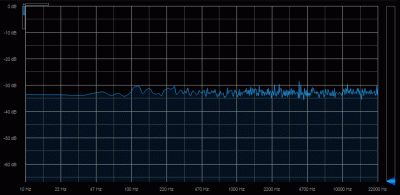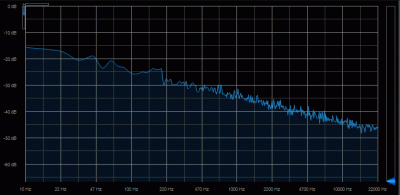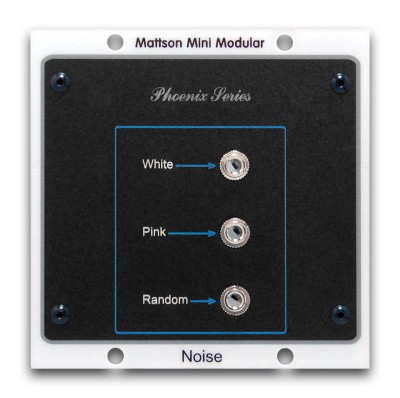
Noise modules are fairly simple. They produce a random electrical signal (noise). They sound like “shhhhh…”
Not all noise is created equal, however. There are different types of noise that have their powers concentrated in different parts of the audio spectrum. They are named after colors of light that have analogous power distribution in the light spectrum (noise with mostly high frequencies is blue, noise with mostly low frequencies is red, etc.)
Here are the types of noise generators most commonly found on synthesizers:
White Noise
Has equal power at all frequencies of the audio spectrum (like white light contains equal amounts of all colors of light).
Pink Noise
Has constant power on a logarithmic scale (equal power in each octave). For example, the power between 50Hz and 100Hz is equal to that between 500Hz and 1000Hz. The power density decreases by 3dB/octave. When you listen to it, it sounds warmer or muddier than white noise because there is more power concentrated in the low end.
Slow Random Noise
A low-frequency random electrical signal that is below the audio spectrum. Comes in handy for use as a random control voltage.
There are other “colors” of noise that are seen on some modules:
- Brown Noise (Brownian Noise, Red Noise): Called brown noise because it emulates Brownian motion (Red Noise is a more accurate color analogy). Similar to pink noise, but with a steeper slope (power density decreases by 6dB/octave).
- Blue Noise: Energy is concentrated in the upper end of the spectrum. Power density increases at a rate of 3dB/octave.
- Violet Noise (Purple Noise): Similar to blue noise, but with a steeper slope (power density increases 6dB/octave)
- Gray Noise: Power is distributed in a way that sounds equally loud at all frequencies to the human ear. Power is concentrated in the low and high ends of the spectrum.
Synthesizer noise modules themselves tend not to have many inputs or controls as their main job is to generate noise. They usually have a different output for each type of noise they are capable of producing. Sometimes they have a single jack and a switch or knob for selecting your favorite color of noise. Some modules give you control of the amount of high or low frequency content of the noise or the rate that the random output changes.
This is the noise module for the Mattson Mini Modular. You can see the different outputs for the various colors and types of noise.
















